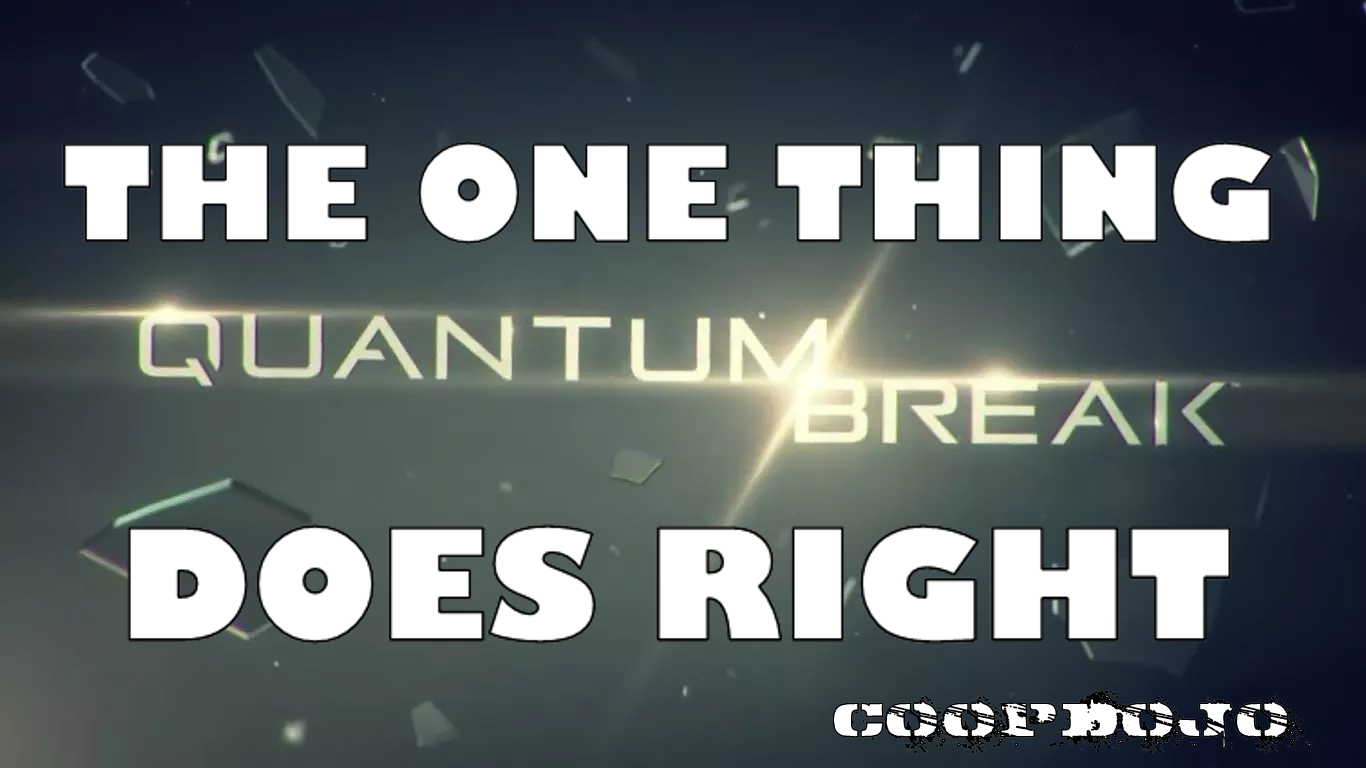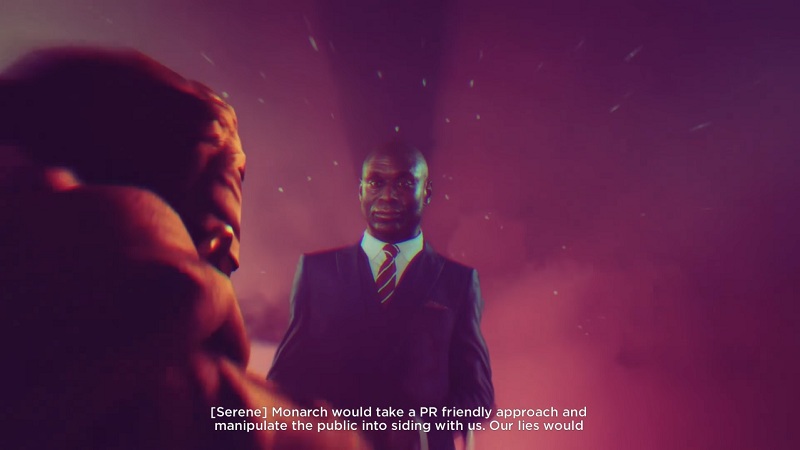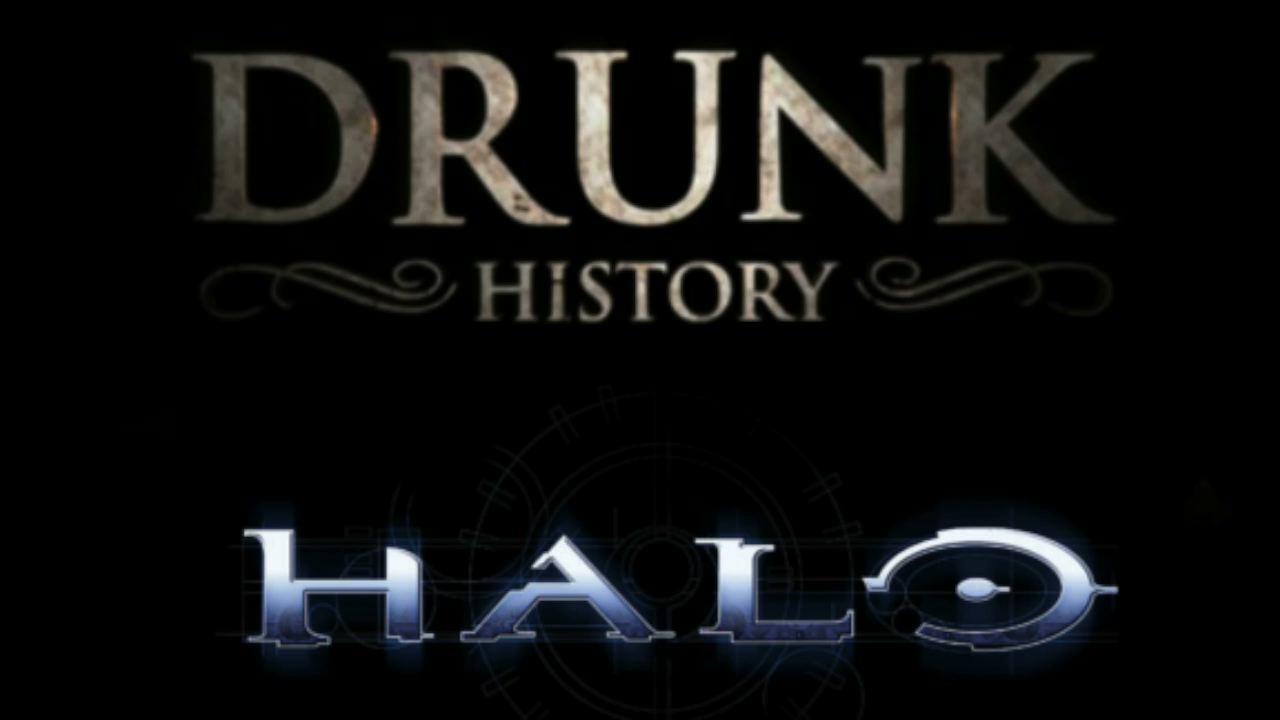
The One Thing Quantum Break Does Right
There’s going to be a lot written about the things Quantum Break does wrong, and much of that will be written by us when we review the game. However, as we break down the ways Quantum Break let us down, it’s important to note some of the things the game does right. Specifically, we were impressed by the perspective shifting to the antagonist (we’ll call it PSA for today) that ends every level except for the final one. This little add-on is something we haven’t seen in games before and we think it could make for some interesting gameplay in future games.

We love the way Quantum Break lets us be our own bad guy.
First, let’s define what PSA is. Quantum Break is a struggle between two time traveling characters, the heroic (and ridiculously named) Jack Joyce and the evil Paul Serene. The game mostly consists of guiding Jack from one point to another against wave after wave of enemies. At the end of the stage, however, you take control of Paul as he decides how to react to Jack’s actions. The first level, for example, has Jack face off with a series of armed attackers at a university while student protesters watch. Paul has to decide how to handle the publicity and the game let’s you decide to either coerce eyewitnesses to blame the destruction on Jack or to simply kill the witnesses and keep it quiet. As the player, you can decide which action you’d rather see your villain do. Moreover, Paul’s prognosticating powers lets him see the outcomes of these actions which lets you decide how you’d like to story to develop. For example, Paul knows that killing the witnesses will ultimately lead to the town rising up against them, so if you’d like to see Jack lead the town in an uprising against the villains, you can do that. On the other hand, if you’d rather play with Jack as a misunderstood hero framed for a terrorist attack, you can do that too.

Apparently your time manipulation powers also give you some sweet beatdown powers.
This PSA gameplay mechanic feels instantly familiar because you’ve seen this as a narrative device in hundreds of movies. The hero – be it James Bond, or Rey, or Jason Bourne, or Katniss Everdeen, or Harry Potter, or Indiana Jones, or Batman – clashes with the villains and pulls off some remarkable feat. Afterwards, the villains gather to scheme and launch their counterattack. Rise of the Tomb Raider is the most recent game that used this mechanic as between levels the player watches the antagonists (villainous siblings) plot their next move. Rather than simply watch them plot, PSA lets you control their response (and thus what the next level will be). This element allows you to decide how villainous you’d like your bad guys to be. Cold and calculating? Sinister but redeemable? Chaotic and homicidal?

Lance Reddick? Awesome! This game has some really excellent actors in it.
Ultimately, this winds up being an interesting way to let players choose the next level. Rather than have a map in which you pick the stage from a series of locations or some disembodied dialogue that let you choose the next path to follow, the game takes a more organic approach. It lets you decide the villain’s actions, which drive the story’s events, which then influences the following stages. Imagine if you could decide the Joker’s next move, or Handsome Jack’s, or even Bowser’s. The ability to replay the game with different events driving the story suggests the possibility of not only different stages but also different stories each time you play.

Press X to smirk.
To be clear, Quantum Break doesn’t fully utilize the PSA mechanic. The changes you can make are interesting but ultimately somewhat superficial to the story and make – as far as I can tell so far – very small impacts on the overall storyline. Still, the potential is here to utilize this mechanic more fully and perhaps even create a game with branching experiences and multiple storylines. The ability to control the villain’s choices, and not just the hero, is an exciting possibility that we hadn’t seen before playing Quantum Break, or at least not done this well. And the possibility of creating a game experience in which you can control the conflict between the hero and villain is really interesting. From that, a player could create a variety of conflicts among interesting characters. Quantum Break deserves some credit for introducing this mechanic and – while we certainly have some complaints about the game – we hope some other developers take notice.


